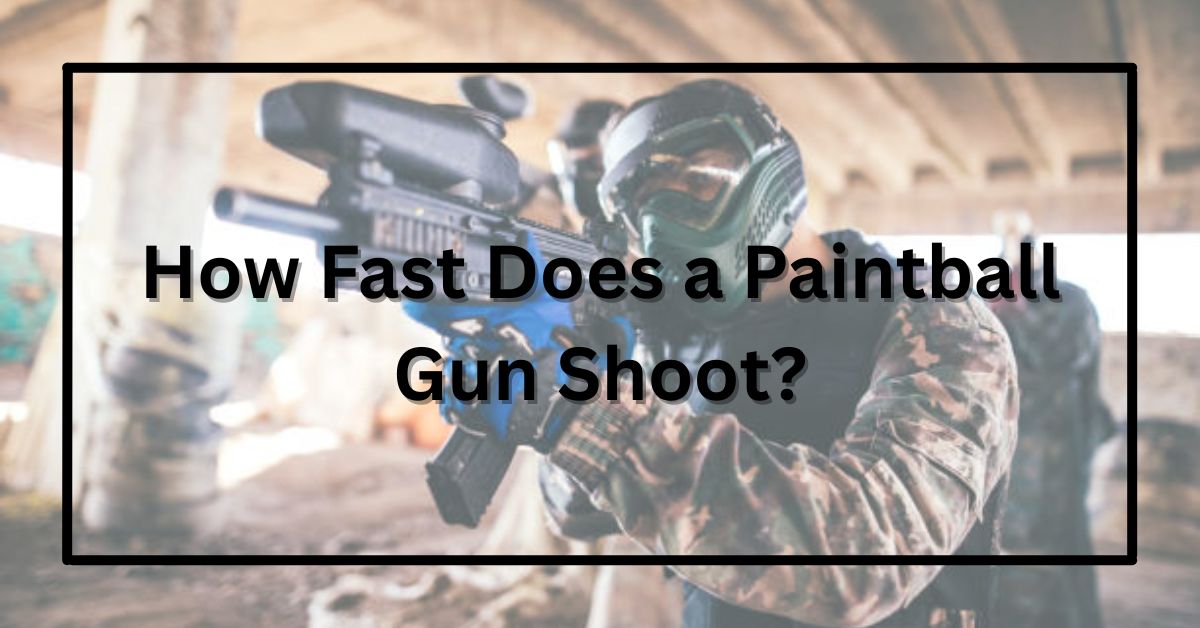If you’ve ever watched a paintball match, you know the action is intense, with paint flying everywhere, players ducking behind bunkers, and that unmistakable “pop-pop-pop” of a marker firing. But just how fast does a paintball gun shoot? And does “fast” mean the speed of the paintball, the rate of fire, or both?
Let’s break it all down so you know exactly what to expect before stepping onto the field.
Two Ways to Measure “Speed” in Paintball
When people ask how fast a paintball gun shoots, they might be talking about two different things:
- Velocity: How fast the paintball travels once fired (measured in feet per second, or FPS).
- Rate of Fire: How many paintballs a marker can fire in a given time (measured in balls per second, or BPS).
Both matter for your gameplay and safety.
1. Paintball Velocity: How Fast Does a Paintball Travel?
Most paintball fields have strict velocity limits for safety. The standard is:
- Average field limit: 280–300 FPS (feet per second)
- In miles per hour: That’s about 190–205 MPH
To put it into perspective:
- A paintball moves almost twice as fast as a professional baseball pitch.
- But it’s much slower than a real bullet, which can exceed 1,000 MPH.
This speed is enough to sting on impact but not enough to cause serious injury if proper safety gear is worn.
Why Is There a Speed Limit?
Paintballs are small, but they can hurt if they hit bare skin or sensitive areas. Most fields cap velocity to:
- Prevent excessive welts and bruises
- Reduce the risk of eye or skin injury
- Keep the game safe and fair
Markers are often chronographed before matches to ensure they meet the limit.
2. Rate of Fire: How Many Paintballs Per Second?
The rate of fire depends on your marker type:
- Mechanical/Semi-Automatic Markers – 5 to 8 balls per second (BPS)
- Electronic Markers – 10 to 15 BPS on average, with tournament modes reaching up to 20 BPS or more.
Some high-end markers can technically shoot even faster, but most fields enforce rate-of-fire caps for safety and to prevent “overshooting” opponents.
What Affects Paintball Gun Speed?
Several factors influence both velocity and firing rate:
1. Marker Type
Electronic markers can shoot much faster than mechanical ones.
2. Air Source
- CO₂ tanks can cause fluctuations in velocity as they cool during rapid firing.
- Compressed air systems (HPA) maintain more consistent speeds.
3. Paintball Size & Quality
High-quality, larger-sized paintballs shoot more consistently. Balls that are undersized or misshapen might slow down or jam.
4. Barrel Length
Longer barrels can help with precision by keeping the ball steady, but they can also slow down the ball. Typically, the sweet spot measures between 12 and 16 inches.
Safety Tips for High-Speed Paintball Guns
Even though paintballs are not lethal, 200 MPH projectiles can still hurt. Here’s how to keep it fun and safe:
- Always Wear a Mask—Eye protection is non-negotiable.
- Check Velocity Before Playing—Most fields have a chronograph station.
- Avoid Overshooting—Stop firing once you’ve marked an opponent.
- Follow Field Rules—Speed limits exist for everyone’s safety.
Conclusion:
On most fields, paintball guns shoot around 280–300 FPS, which equals about 200 MPH. In terms of firing speed, semi-automatic markers average 5–8 BPS, while electronic markers can reach 15+ BPS in tournament settings.
These speeds are fast enough to deliver adrenaline-packed gameplay but still safe when you follow the rules and wear the right gear.

